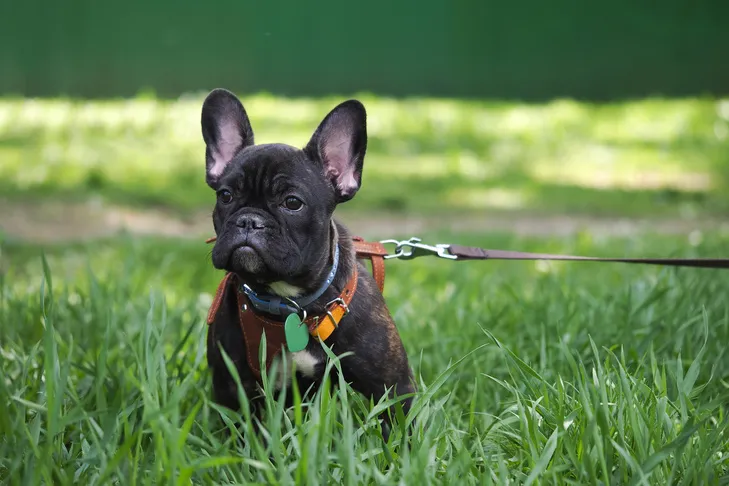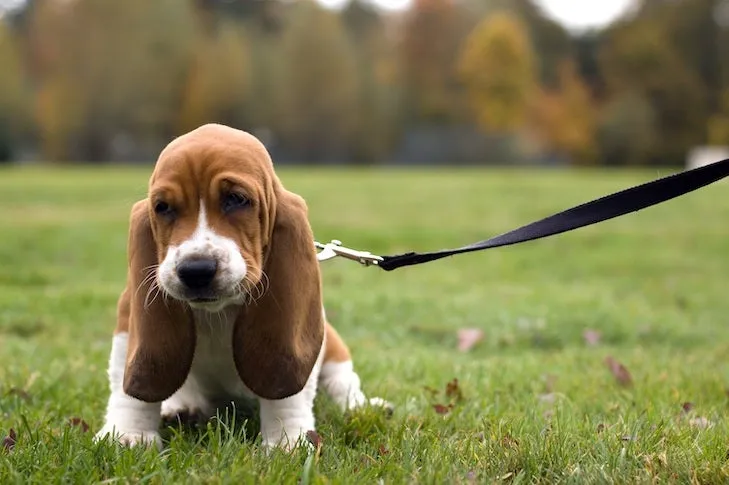Many new puppy owners assume that their canine companions instinctively know how to walk politely on a leash. However, this crucial skill is something that must be learned and reinforced through consistent training. Teaching your puppy to enjoy and accept the leash is not only vital for their safety and well-being but also enhances the enjoyment of your daily walks together. Mastering “How To Get Your Puppy To Like The Leash” early on will set a strong foundation for a lifetime of pleasant outings and strengthens the bond between you and your furry friend. Dog training experts emphasize that patience, positive reinforcement, and a structured approach are key to successful leash introduction, ensuring your puppy associates the leash with positive experiences rather than stress or discomfort.
Setting the Foundation for Leash Training
Building a positive association with the leash begins long before you step foot outside. The goal is to make the collar, harness, and leash feel like natural, comfortable, and even exciting parts of your puppy’s routine.
Introduce the Collar or Harness and Leash Gradually
Begin by simply letting your puppy get accustomed to wearing a collar or a harness. For the first few sessions, allow them to wear it for very short periods inside the house, perhaps while you are engaging in play or offering tasty treats. This helps your puppy understand that “collar time” or “harness time” equals fun and rewards, not something restrictive. Once they are comfortable with the collar or harness, introduce the leash in the same manner. Let them drag it around for a few minutes under your supervision, always associating it with positive interactions like playtime or receiving treats. This gentle introduction is crucial in teaching your puppy to like the leash.
Teach a Positive Sound Cue
A consistent sound cue is an invaluable tool in leash training. This cue should signal to your puppy that a reward is imminent. Many trainers use a clicker, while others prefer a simple verbal cue like “yes” or even a tongue cluck. The method is straightforward: in a quiet, distraction-free environment, with your puppy wearing their collar and leash, make your chosen sound. The instant your puppy acknowledges the sound by turning their head towards you or making eye contact, immediately reward them with a small, high-value treat. After several repetitions, your puppy will not only look at you but also begin to move towards you in anticipation of the reward, understanding that the sound means good things are coming their way.
Encourage Your Puppy to Come To You
Once your puppy associates the cue with a treat, you can start building on that connection. While they are still on the leash and collar, make your sound cue, and as they start to move towards you, take a few steps backward. Reward them generously when they reach you. Gradually increase the number of steps you take backward, encouraging your puppy to follow you further before receiving their reward. Continue this progression until your puppy, upon hearing the cue, confidently comes to you and walks beside you for a few paces. Remember that puppies have limited attention spans, so keep these training sessions short and positive, always ending before they become mentally fatigued.
 French bulldog puppy in a harness sitting in tall green grass on a leash for a walk.
French bulldog puppy in a harness sitting in tall green grass on a leash for a walk.
Practice Indoors with the Leash
With your puppy now understanding how to respond to your cue and come to you, it’s time to practice walking with the leash in a low-distraction indoor environment. The sensation of the leash around them will be challenge enough at this stage. Start by taking just a few steps, continuously offering treats and verbal praise as your puppy learns to follow you with the leash attached. The goal is to make every interaction with the leash inside the home a positive one, reinforcing the idea that the leash means connection with you and rewards. This indoor practice is essential for puppies to solidify their understanding before encountering external stimuli.
Transition Training to the Outdoors
Once your puppy is comfortable and responsive to the leash indoors, you are ready to venture into the great outdoors. This step introduces a new level of complexity due to the abundance of sights, sounds, and smells that will naturally pique your puppy’s curiosity. Be patient and keep these initial outdoor excursions very short. During your walk, stay vigilant and observe your puppy closely. If you notice them about to lunge towards something or become overly distracted, immediately use your sound cue and take a few steps away, encouraging them to follow. Reward them with a treat for redirecting their attention back to you. This proactive approach helps your puppy learn to focus on you even amidst exciting new environments. As they grow more confident, you can also explore neat tricks to teach your dog to further enhance their engagement during walks.
Troubleshooting Common Leash-Training Challenges
Even with a solid foundation, you might encounter specific challenges as your puppy grows, visits new places, or faces increased distractions. Addressing these issues proactively is key to fostering good leash manners and ensuring pleasant walks for both of you.
When Your Puppy Pulls on the Leash
One of the most common issues is a puppy pulling forcefully on the leash. If your dog begins to pull in the opposite direction, the most effective technique is to turn yourself into “a tree.” Stand completely still and refuse to move forward until your dog relaxes the tension on the leash and comes back to you. It’s crucial not to yank, jerk, or drag your dog along. This teaches them that pulling gets them nowhere, while a slack leash allows forward movement. For persistent pullers, alternative training tools such as front-hook harnesses or head halters can be very effective in managing the behavior. Addressing my dog pulls on the leash and chokes is vital for their comfort and safety.
 Basset Hound puppy sitting in the grass on lead.
Basset Hound puppy sitting in the grass on lead.
Addressing Puppy Lunging Behavior
If your puppy tends to lunge at objects or other animals during walks—be it another dog, a car, or a skateboarder—proactive intervention is essential. The moment you anticipate a lunge, redirect their attention with your cue sound and a high-value treat before they have the chance to react. Increase the distance between your dog and the perceived trigger, gradually decreasing it as your puppy becomes more comfortable and focuses on you. Staying alert and prepared is key to managing these situations effectively. While more common in certain breeds, any dog can exhibit lunging due to excitement or fear, highlighting the importance of early intervention and consistent redirection. For those who aspire to more advanced skills, learning how do you train a dog to walk off leash can be the next step after mastering on-leash manners.
Managing Excessive Barking on Leash
Some puppies develop a habit of barking excessively at other dogs or people while on a walk. This behavior often stems from a lack of sufficient mental and physical stimulation. Ensure your puppy receives the appropriate amount of exercise and enrichment for their age and breed. If barking persists, employ a similar strategy as with lunging: create distance from the trigger and offer treats before your puppy starts to bark. The goal is for them to associate the presence of other dogs with turning their attention back to you for a reward. Consistent practice will help them understand that looking at you, rather than barking, is the desired behavior, gradually reducing the need for constant treats and troubleshooting during your walks.
Over time, you will naturally reduce the frequency of treats and the amount of active troubleshooting your puppy requires during walks. However, it’s always a good practice to keep some treats on hand to randomly reinforce excellent leash-walking behavior. This intermittent reinforcement helps maintain strong habits and ensures your puppy continues to enjoy their time on the leash, making every walk a positive experience for both of you.
